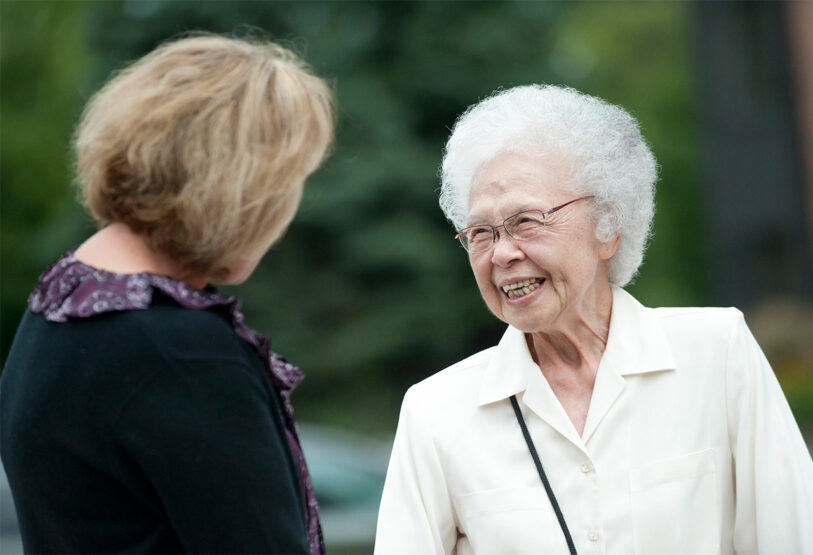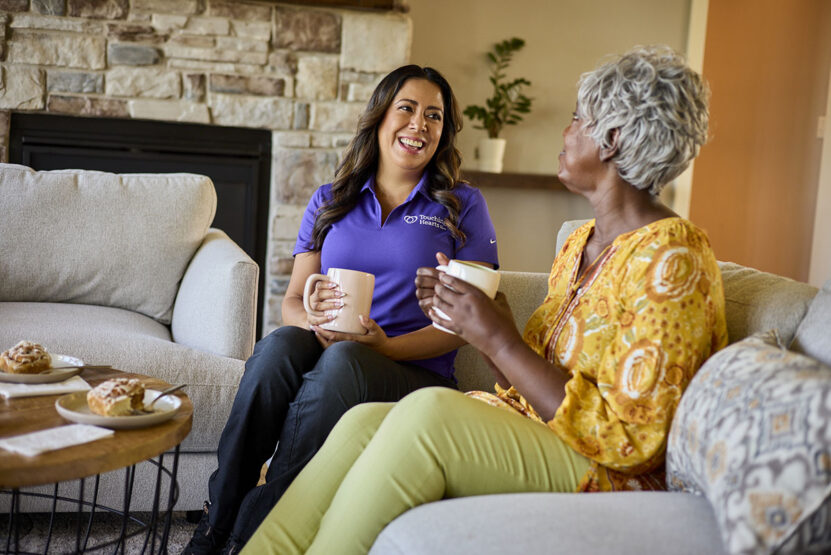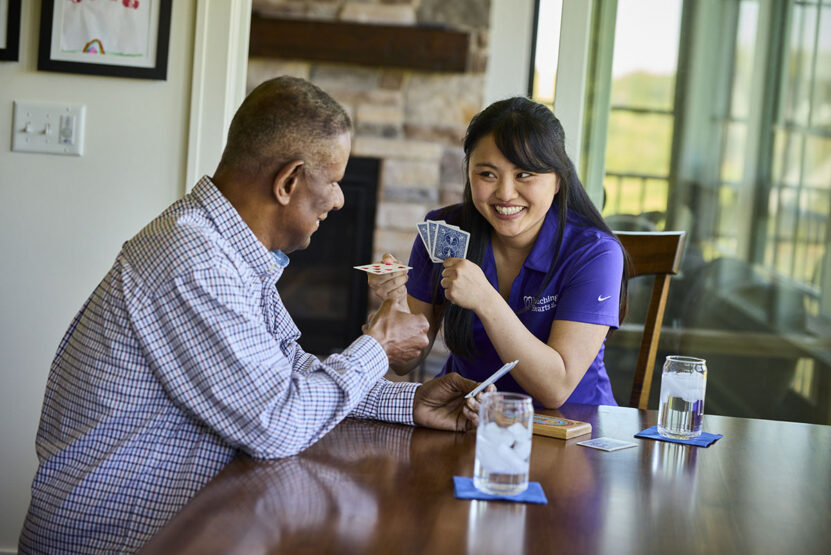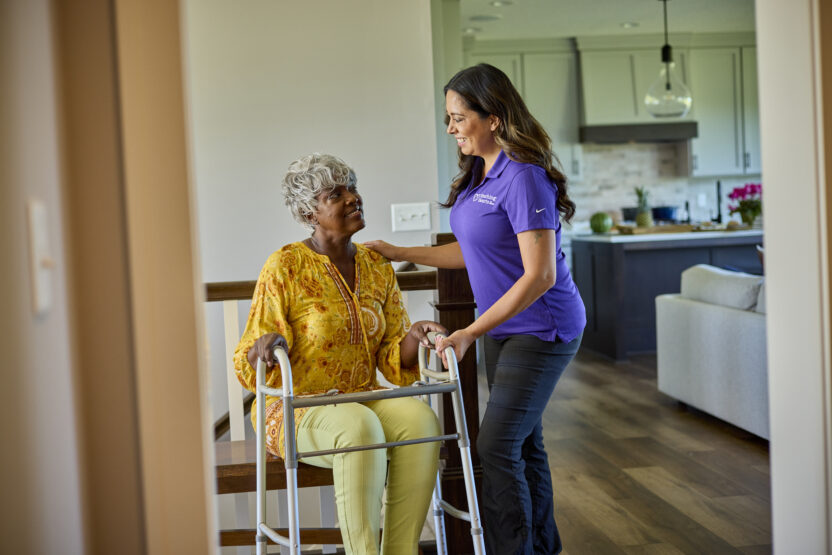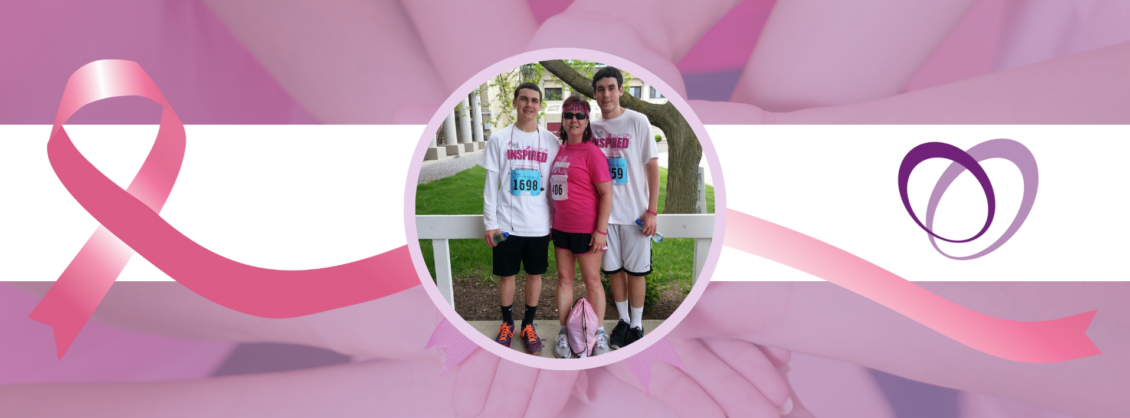Anticipating when death is near
Certain signs and symptoms can help a caregiver anticipate when death is near. They are described below, along with suggestions for managing them. It is important to remember that not every client experiences each of the signs and symptoms. In addition, the presence of one or more of these symptoms does not necessarily indicate that the client is close to death. A member of the client’s health care team can give family members and caregivers more information about what to expect.
- Drowsiness, increased sleep, and/or unresponsiveness (caused by changes in the client’s metabolism). The caregiver and family members can plan visits and activities for times when the client is alert. It is important to speak directly to the client and talk as if the person can hear, even if there is no response. Most clients are still able to hear after they are no longer able to speak. Clients should not be shaken if they do not respond.
- Confusion about time, place, and/or identity of loved ones; restlessness; visions of people and places that are not present; pulling at bed linens or clothing (caused in part by changes in the client’s metabolism). Gently remind the client of the time, date, and people who are with them. If the client is agitated, do not attempt to restrain the client. Be calm and reassuring. Speaking calmly may help to re-orient the client.
- Decreased socialization and withdrawal (caused by decreased oxygen to the brain, decreased blood flow, and mental preparation for dying). Speak to the client directly. Let the client know you are there for them. The client may be aware and able to hear, but unable to respond. Professionals advise that giving the client permission to “let go” by family members can be helpful.
- Decreased need for food and fluids, and loss of appetite (caused by the body’s need to conserve energy and its decreasing ability to use food and fluids properly).
- Allow the client to choose if and when to eat or drink. Ice chips, water, or juice may be refreshing if the client can swallow. Keep the client’s mouth and lips moist with products such as glycerin swabs and lip balm.
- Loss of bladder or bowel control (caused by the relaxing of muscles in the pelvic area). Keep the client as clean, dry, and comfortable as possible. Place disposable pads on the bed beneath the client and remove them when they become soiled.
- Darkened urine or decreased amount of urine (caused by slowing of kidney function and/or decreased fluid intake). A member of the client’s health care team may need to insert a catheter to avoid blockage. A member of the health care team can teach the caregiver how to take care of the catheter if one is needed.
- Skin becomes cool to the touch, particularly the hands and feet; skin may become bluish in color, especially on the underside of the body (caused by decreased circulation to the extremities). Blankets can be used to warm the client. Although the skin may be cool, clients are usually not aware of feeling cold. Caregivers should avoid warming the client with electric blankets or heating pads, which can cause burns.
- Rattling or gurgling sounds while breathing, which may be loud; breathing that is irregular and shallow; decreased number of breaths per minute; breathing that alternates between rapid and slow (caused by congestion from decreased fluid consumption, a buildup of waste products in the body, and/or a decrease in circulation to the organs).
- Breathing may be easier if the client’s body is turned to the side and pillows are placed beneath the head and behind the back. Although labored breathing can sound very distressing to the caregiver, gurgling and rattling sounds do not cause discomfort to the client. An external source of oxygen may benefit some clients. If the client is able to swallow, ice chips also may help. In addition, a cool mist humidifier may help make the client’s breathing more comfortable.
- Turning the head toward a light source (caused by decreasing vision). Leave soft, indirect lights on in the room.
- Increased difficulty controlling pain (caused by progression of the disease). It is important that pain medications are given by healthcare providers as the client’s doctor has prescribed. (The caregiver should contact TH office if they are concerned that the client is not comfortable.
- Involuntary movements, changes in heart rate, and loss of reflexes in the legs and arms are additional signs that the end of life is near.
What are some ways that caregivers can provide emotional comfort to the client?
Everyone has different needs, but some emotions are common to most dying clients. These include fear of abandonment and fear of being a burden. They also have concerns about loss of dignity and loss of control. Some ways caregivers can provide comfort are as follows:
Keep the person company—talk, watch movies, read, or just be with the person.
- Allow the person to express fears and concerns about dying, such as leaving family and friends behind. Be prepared to listen.
- Be willing to reminisce about the person’s life.
- Avoid withholding difficult information. Most clients prefer to be included in discussions about issues that concern them as directed by family members and TH office.
- Reassure the client that you will honor advance directives, such as living wills as directed by their Plan of Care.
- Ask if there is anything you can do.
- Respect the person’s need for privacy.
For additional information go to www.cancer.gov




